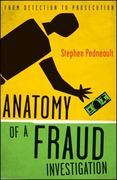
I would like you to help me these questions from the pictures
ECM136 2019/20 Exam Paper - Questions 2/5 ECM136 2019/20 Exam Paper - Questions 3/5 the IMF under the intellectual leadership of Jacques Polak and in 7,000 the context of the Bretton Woods system of fixed exchange rates. 6,000 5,000 4,000 (a) Enumerate its main assumptions. (20 marks) 3,000 2,000 (b) Analyse and interpret its equilibrium condition, which we 1.000 wrote in the lectures as: 1998 2001 2004 2007 2010 2013 dirt = s + pi + pyt - lit + Ex - (1-0)dt % of current US GDP (left scale) " billions of current US dollars (right scale) where int is (the log of) international reserves, s is (the log of) the Figure 1: Daily Global Foreign Exchange Market Turnover, nominal exchange rate, pt is (the log of) the Foreign price level, yt Average for April. Source: BIS (website). is (the log of) Home output, it is the Foreign interest rate, dt is (the log of) domestic credit, 0 0is the income forex market segments that channel each of the types of forex elasticity of money demand and 1 > 0 is the interest-rate semi- transactions, or forex financial instruments. Discuss these trends elasticity of money demand. (30 marks) and define the depicted forex financial instruments. (40 marks) 60 50 4. Meese and Rogoff's (1983) Exchange Rate Disconnect Puzzle 40 (a) Using the reported results in Table 1, describe the work of Meese and Rogoff (1983) and define the exchange rate disconnect puzzle. 30 (25 marks) 20- (b) Summarise how the literature on exchange rate modelling and forecasting developed in response to Meese and Rogoff (1983). In 10 particular, enumerate what is known at present about the predictability or not of exchange rates (you should be able to list at 1998 2001 2004 2007 2010 2013 least half a dozen conclusions - without the need to cite precise " Spot transactions Outright forwards Foreign exchange swaps Currency swaps Options and other products references). (25 marks) Figure 2: Share of Traded Instruments in the Global Foreign Exchange Market, % of total. Source: BIS (website) 3. The Monetary Approach to the Balance of Payments The monetary approach to the balance of payments (BoP) was developed in the 1960s, in part within the research department ofECM136 2019/20 Exam Paper - Questions 4/5 ECM136 2019/20 Exam Paper - Questions 5/5 (a) Derive and interpret the first-order conditions for this general Table 1: The Meese-Rogoff (1983) Forecasting Results Model: Random Forward Univariate VAR Monetary Dornbusch optimisation problem. (15 marks) walk rate AR mode mode Ex. rate Horizon (b) Analyse the role of international borrowing and lending by $/DM 3.72 3.20 3.51 5.40 3.17 3.65 8.17 9.03 12.40 11.83 9.64 12.03 focusing on the special case when s = - and y1









